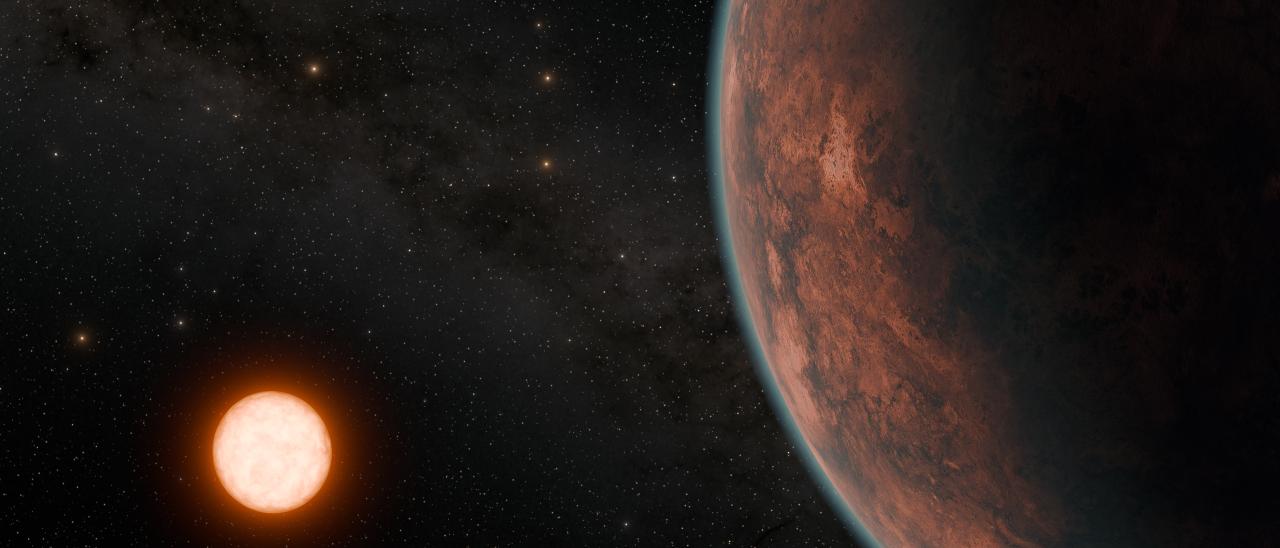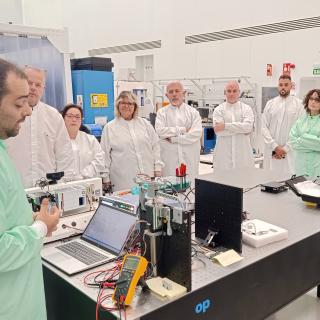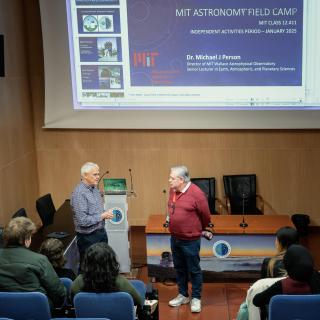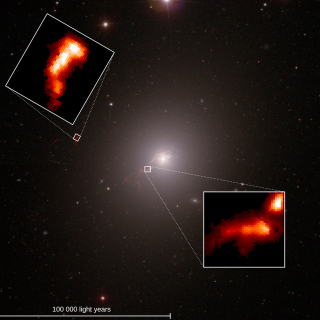An international research, in which the Instituto de Astrofísica de Canarias (IAC) has played a leading role, has found a planet of intermediate size between Earth and Venus orbiting a cool red dwarf 40 light-years away. The new world, named Gliese 12 b, lies within the habitable zone of its star, making it a promising candidate for the James Webb Space Telescope to study its atmosphere. The discovery was made possible thanks to observations from NASA's TESS satellite and other facilities such as CARMENES, at Calar Alto Observatory (CAHA), and MuSCAT2, installed at the Carlos Sánchez Telescope (TCS), at Teide Observatory.
An international research, combining data from space- and ground-based telescopes, has found the closest Earth-sized temperate exoplanet to date, detected by the transit method, i.e. by observing the periodic dimming of its star caused by the planet's passage. The new world, called Gliese 12 b, has a diameter comparable to Venus, i.e. slightly smaller than our planet, and its surface temperature is estimated at around 42 °C (107 F). The final temperature, however, will depend on whether this planet has been able to retain an atmosphere (and its composition) from the time it formed to the present.
The exoplanet orbits its host star, Gliese 12, a cool red dwarf located almost 40 light-years away in the constellation Pisces, every 12.8 days. The star is only about 27% of the Sun’s size, with about 60% of the Sun’s surface temperature. The distance separating Gliese 12 and the new planet is just 7% of the distance between Earth and the Sun, so it receives 1.6 times more energy from its star as Earth does from the Sun.
“Although we don’t yet know whether it possesses an atmosphere, we’ve been thinking of it as an exo-Venus, with similar size and energy received from its star as our planetary neighbor in the solar system," says Masayuki Kuzuhara, a project assistant professor at the the Astrobiology Center in Tokyo, who co-led the research team hat has just published its results in The Astrophysical Journal Letters.
“Gliese 12 b represents one of the best targets to study whether Earth-size planets orbiting cool stars can retain their atmospheres, a crucial step to advance our understanding of habitability on planets across our galaxy,” explains Shishir Dholakia, an astrophysicist at the Centre for Astrophysics at the University of Southern Queensland in Australia and principal investigator of another team that has published its results in parallel and independently in the journal Monthly Notices of the Royal Astronomical Society.
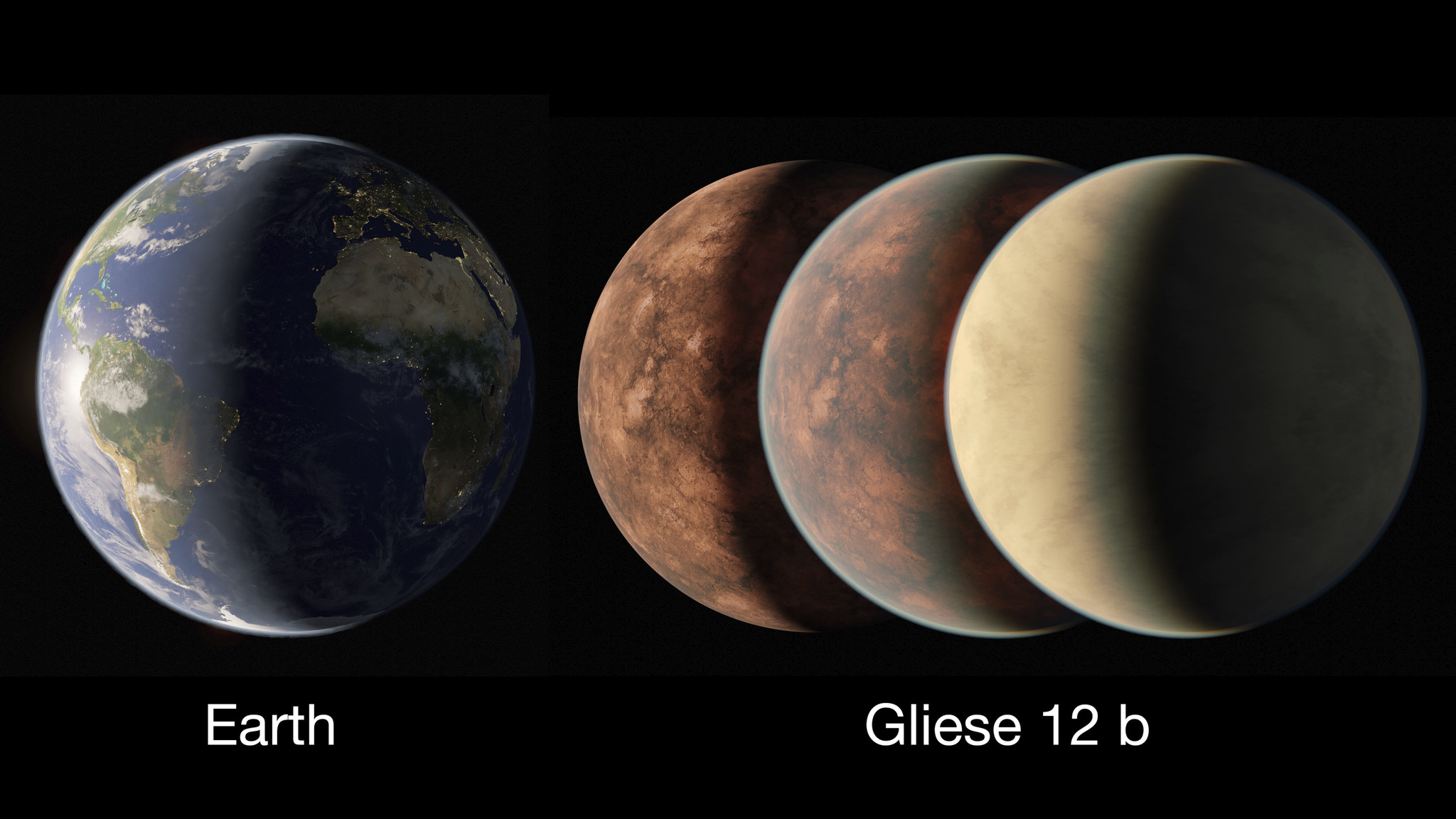
“This is a unique candidate for further atmospheric study that may help unlock some aspects of our own solar system’s evolution,” explains Enric Pallé, a researcher at the IAC who also participated in the discovery. "Although Earth and Venus are very similar planets in size and mass, their histories have been very different. Earth is still habitable, but Venus is not due to its total loss of water; the atmosphere of Gliese 12 b could teach us a lot about how the atmospheric evolution and habitability conditions of terrestrial planets change as they evolve," he adds.
One important factor in retaining an atmosphere is the storminess of its star. Red dwarfs tend to be magnetically active, resulting in frequent, powerful X-ray and ultraviolet radiation flares. However, analyses by both teams conclude that Gliese 12 shows no signs of extreme behavior, making this system an ideal candidate for studying its atmosphere with the James Webb Space Telescope.
With today's technology, it is possible to use the transit method to analyse the chemical composition of exoplanetary atmospheres. By studying the unique pattern of chemical fingerprints that is generated when starlight passes through the planet's gaseous layer, it is possible to identify the molecules present and better understand their composition.
“We know of only a handful of systems to date that are both close enough to us and meet other criteria needed for this kind of study. Gliese 12 b is an exceptional candidate that will help us to better understand the diversity of atmospheres around temperate Earth-like planets," concludes Pallé.
This finding has had an important Spanish participation, especially in the measurements performed with the CARMENES spectrograph (Calar Alto high-Resolution search for M dwarfs with Exoearths with Near-infrared and optical Échelle Spectrographs), at Calar Alto Observatory (CAHA), and in the observations performed with the MuSCAT2 instrument (Multicolour Simultaneous Camera for studying Atmospheres of Transiting exoplanets), installed at the Carlos Sánchez Telescope (TCS), at Teide Observatory.
In addition to Enric Pallé, the following researchers have also participated on behalf of the IAC: Felipe Murgas, Jaume Orell Miquel, Akihiko Fukui, Norio Narita, Emma Esparza-Borges, Hannu Parviainen, Néstor Abreu García, Víctor J. S. Béjar, Yéssica Calatayud-Borras, Ilaria Carleo, Gareb Fernández-Rodríguez, Daniel Galán, Samuel Geraldía-González, Josafat González-García, Florence Libotte, Alberto Madrigal-Aguado, Pedro Pablo Meni Gallardo, Giuseppe Morello, Sara Muñoz Torres, Alberto Peláez-Torres y Manuel Sánchez-Benavente.
Articles:
- M. Kuzuhara et al. “Gliese 12 b: A temperate Earth-sized planet at 12 pc ideal for atmospheric transmission spectroscopy”. ApJL 2024, 967, L21. DOI: 10.3847/2041-8213/ad3642
- S. Dholakia et al. "Gliese 12 b, a temperate Earth-sized planet at 12 parsecs discovered with TESS and CHEOPS". MNRAS 2024, Volume 531, Issue 1, Pages 1276–1293. DOI: 10.1093/mnras/stae1152
Contacts at the IAC:
Enric Pallé, epalle [at] iac.es (epalle[at]iac[dot]es)
Felipe Murgas fmurgas [at] iac.es (fmurgas[at]iac[dot]es)
Jaume Orell Miquel jom [at] iac.es (jom[at]iac[dot]es)
